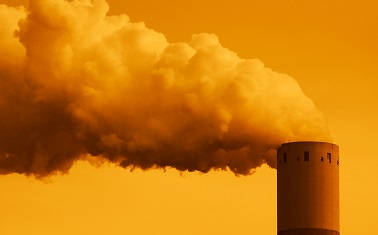EPA Administrator Scott Pruitt has been swamped by scandal, from taking first class flights at taxpayer expense to living in a lobbyist’s condo.
Pruitt’s behavior is unethical but, even more importantly, his actions will lead to greater health risks from pollution in our air, water, and land.
We can’t ignore the public health crisis created, in part, by Pruitt’s ethical crisis.
SCANDAL: PRUITT HIRES OKLAHOMA BANKING FRIEND
IMPACT: WILL TOXIC WASTE SITES BE CLEANED UP PROPERLY?
Pruitt hired close friend and disgraced former banker Albert “Kell” Kelly to oversee the Superfund program, which is responsible for the cleanup of toxic waste sites.
As head of his family’s bank in Oklahoma, Kelly lent Pruitt — then a $38,000 a year state legislator — money for a large house and part ownership in a minor league baseball team.
Since then, the FDIC has banned Kelly from the financial services industry for life. But Pruitt gave Kelly a job “streamlining” Superfund despite no previous environmental or public health experience.
Kelly owns stock in companies responsible for contaminating some Superfund sites.
There are serious questions about whether this “streamlining” is code for doing quick, incomplete cleanup of toxic sites in order to show progress for public relations purposes. That would let polluters off the hook while saddling Americans with greater risks of illness.
SCANDAL: PRUITT GETS SWEETHEART CONDO DEAL FROM LOBBYIST
IMPACT: OIL LOBBYISTS GAIN ACCESS, CARS AND TRUCKS WILL GET DIRTIER
Pruitt received a below-market-value housing arrangement from the wife of a prominent energy lobbyist whose clients stood to potentially gain from actions taken by the Administrator.
Pruitt’s favoritism for industry led to announcements like the weakening of America’s clean cars standards – a move that will cause more pollution, smog, and asthma attacks.
Pruitt also met with executives from Fitzgerald Truck Sales and created a loophole for their high polluting trucks, which will cost thousands of lives a year from health problems due to dirtier air.
The condo deal was likely not an actual quid pro quo, but Pruitt’s coziness with industry and willingness to accept their favors creates unhealthy, unethical influence and accesses.
SCANDAL: PRUITT HIRES SENIOR OFFICIAL FROM CHEMICAL INDUSTRY LOBBYING ARM
IMPACT: UNDERMINING OF NEW CHEMICAL SAFETY LAW, ALLOWING DANGEROUS CHEMICALS ON THE MARKET
Using an obscure provision in the Safe Drinking Water Act, Pruitt hired Nancy Beck directly from the American Chemistry Council – the main trade group for the chemical industry. Because she was hired that way, she did not have to sign the Administration’s ethics pledge, which would have limited her actions on issues related to her former industry.
Beck now effectively runs the EPA office that oversees her old industry, and is charged with implementing the framework rules for the 2016 chemical safety law.
That law was a major upgrade, fixing a badly broken system that allowed tens of thousands of potentially hazardous chemicals to remain on or enter the market — and Beck’s rules are on their way to breaking it all over again.
One example: Pruitt’s EPA shelved plans to ban paint strippers that use methylene chloride, which is proven to be dangerous and has led to dozens of deaths.
SCANDAL: SECRET SCHEDULE, SECRET PHONE BOOTH
IMPACT: UNKNOWN IMPACT OF LOBBYISTS ON POLICY
Pruitt keeps much of his schedule hidden, and sometimes doesn’t allow note taking in meetings, so it’s hard to tell who he talks to about what.
He’s also being investigated by the Inspector General for spending $43,000 on a secure phone facility next to his office – even though the EPA building already has one.
But based on the information that has come out, we know he spends a great deal of time listening to corporate lobbyists.
The result is an agenda that not only leans against health and anti-pollution rules, but one marked by favors to key industries with ties to Pruitt, such as attempts to ease methane pollution rules for natural gas companies.
As William Ruckelshaus, EPA administrator under Presidents Nixon and Reagan said, Pruitt is:
“taking a meat ax to the protections of public health and environment and then hiding it.”
Some of Pruitt’s scandals are purely cases of behavior that is unethical, like his use of first class flights. Those are serious and, because they have happened repeatedly, suggest he’s unfit for his public trust.
But we shouldn’t forget the far more dangerous impact of many of his scandals: our children will inherit a less clean, less healthy world.
 With entire towns in Oregon and Washington razed, ash raining down on Denver and the skies over San Francisco an apocalyptic orange, the unprecedented wildfire season in the Western U.S. is getting plenty of coverage. But much of it seems to ignore a central fact: This devastation — more frequent, bigger wildfires, and a longer fire season — is largely a consequence of climate pollution produced by burning fossil fuels.
With entire towns in Oregon and Washington razed, ash raining down on Denver and the skies over San Francisco an apocalyptic orange, the unprecedented wildfire season in the Western U.S. is getting plenty of coverage. But much of it seems to ignore a central fact: This devastation — more frequent, bigger wildfires, and a longer fire season — is largely a consequence of climate pollution produced by burning fossil fuels.












